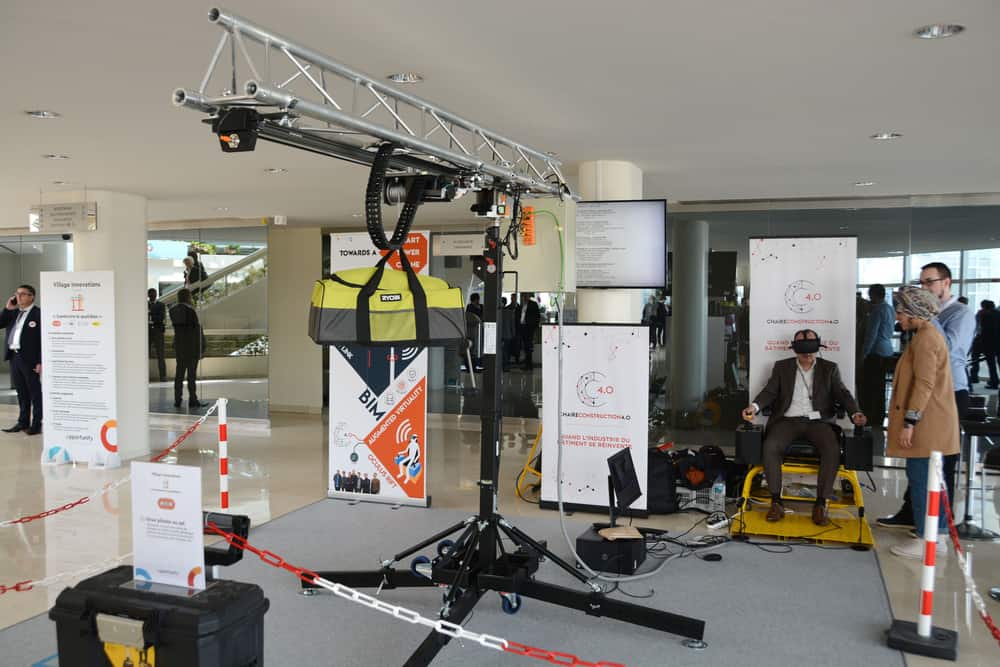
3 questions to Thomas Danel, a PhD student at Chaire Construction 4.0
5 minutes of reading
Bouygues Construction and Centrale Lille formed Chaire Construction 4.0 in 2017. Its aim was to support the digitisation and industrialisation of the sector. Thomas Danel, a PhD student in this field, has been working on a prototype for a remote-controlled crane. He talked to us about his project.

What is the exact title of your thesis?
Its exact title is ‘Extraction and analysis of data in construction in regard to the connected site’. It is about defining, exploring and designing construction sites of the future. The small amount of data which is available today is rich in information which is useful to a company. The form this data comes in is very varied (paper documents, images, scans, oral communication) and is therefore quite complicated to use with the digital tools which are available. To respond to this challenge, I have been working with Data Lab de Bouygues Construction on data capture and analysis issues. The Nouveau Conservatoire (Paris XIVème) is a pilot project and a tangible example of this. The Data Lab, together a team from Travaux, has built a real playground for data here. The ‘playthings’ include, among other things, a device for capturing crane data (position of the hook and load in relation to time). Apart from this data, I have been developing algorithms for generating an automatic daily progress plan – the equivalent of production monitoring in a factory, but for a construction site instead.Why are you particularly interested in cranes?
A crane is vital! It is the most important thing on a building site. Nothing can get done without a crane. It is the nerve centre of a construction project. The algorithms which I developed highlighted the full potential of data gathered from cranes. This led me to focus my work on this particular subject. Modern construction methods have evolved alongside machines capable of lifting increasingly heavy loads. It’s a question of productivity. Imagine the work and manpower time required to pour a concrete wall without a crane. Just think about it! It’s just not possible now. Just a few operations with a crane are all that are needed to install formwork and reinforcements, as well as pour the concrete. The health and safety of workers is also improved as they suffer less from musculoskeletal disorders associated with the performance of repetitive tasks. Finally, a crane is not just a machine – there is also the crane operator. The operator can make a big difference in terms of the site’s productivity if they are given the right information at the right moment. This is the aspect which I am working on at present.What are the project’s objectives in the short, medium and long term? And the next stages?
We now have a prototype of a connected crane, operational at a laboratory level, which has been created at the Ecole Centrale de Lille. I will be at the Bouygues stand (D22) at the VivaTech trade fair on 18 May demonstrating this remote-controlled prototype. This proof of concept will serve as a foundation for improving the work of crane operators, as well as reflecting on cranes in the future and how they may be used. It makes sense to think about scaling up in the short term. This will of course require improvements, both on a technical level and on the level of safety and compliance with standards. Bouygues Construction already has an R&D project under way for the end of 2019, led by Yohann Valable.In the medium term, Chaire Construction 4.0 will be supporting the company with the changes envisaged in the job of a crane operator…
… This also applies to all workers.They must all be involved in discussions about digitalisation in the construction industry. Feedback on the use of site data must also be maximised to avoid any misunderstandings. The long term will be all about training today’s employees in the skills they will need in the future. As for the next steps…Continuous improvement is one of Chaire Construction 4.0’s mottoes. Perfecting the software and the prototype are both things which I will pursue until the end of my thesis, and perhaps after that too. The prototype of a connected crane creates a firm base for the development of projects with students from Centrale Lille and other establishments. It is also a potential source for collaboration with key players from the world of start-ups, who are beginning to develop relevant tools for cranes. There is a long way still to go in creating a site which is truly connected, but the steps which have been taken during my research work have been very positive. At the end of May, I will be taking part in an international science conference in Canada. This will be an opportunity to present the project and to discuss ideas with other interested researchers and entrepreneurs. I am also going to make the most of these two projects (‘Connected Cranes’ and ‘Automatic Daily Progress Plan’) by writing some scientific articles for international journals. The next stages of my doctoral thesis will be discussed at my next steering committee.More reading
Read also




What lies ahead? 7 megatrends and their influence on construction, real estate and urban development
Article
20 minutes of reading

